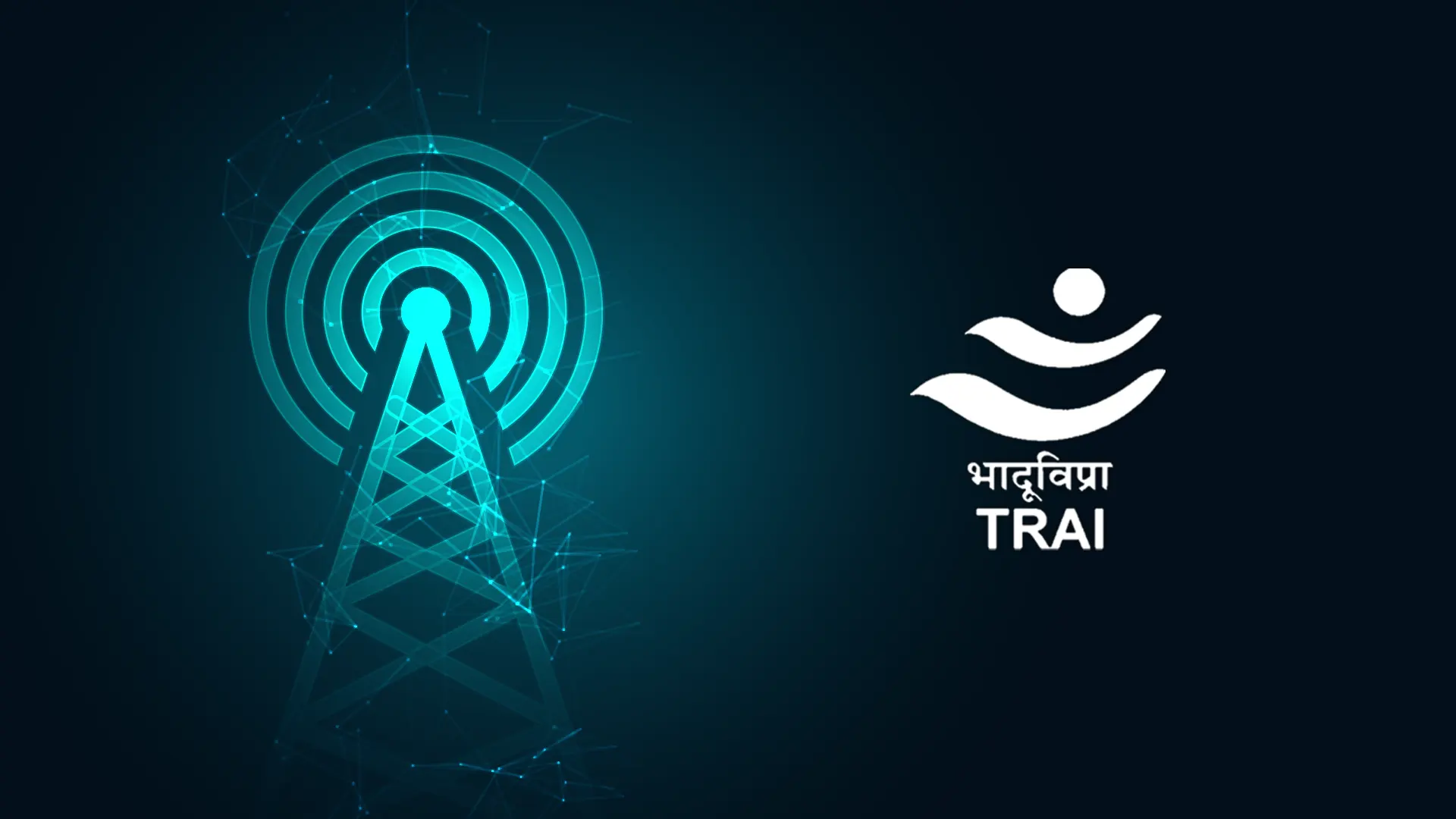 838.0 views
838.0 views
TRAI's issued Consultation Paper on Revision of National Numbering Plan
The bedrock of any communication network is the system that directs calls, messages, and data to their intended destinations. In telecommunications, this critical role is played by the National Numbering Plan (NNP). India's NNP, established in 1993 and revised in 2003, has served the nation well for over two decades. However, the telecom landscape is experiencing a period of phenomenal transformation, driven by factors like the explosive growth of mobile subscribers, the advent of 5G technology, and the burgeoning demand for Machine-to-Machine (M2M) communication.
Recognizing these evolving needs, the Telecom Regulatory Authority of India (TRAI) recently ignited a firestorm of discussion within the industry with its consultation paper proposing significant revisions to the National Numbering Plan. This article delves into the intricacies of the NNP, explores the key areas targeted for revision, and analyzes the potential impact on various stakeholders in the Indian telecom industry.
Demystifying the National Numbering Plan (NNP)
The NNP is a comprehensive framework for managing Telecommunication Identifiers (TIs), essentially the unique phone numbers assigned to mobile and landline users. These TIs ensure seamless communication by enabling call routing systems to accurately direct calls, messages, and data to the correct recipients. The NNP governs various aspects of TI management, including:
● Allocation: The NNP dictates allocating numbering resources to different service providers, such as mobile network operators and fixed-line service providers.
● Assignment: It establishes guidelines for assigning specific TIs to individual subscribers based on their location and service type.
● Management: The NNP outlines best practices for efficiently managing numbering resources, preventing wastage, and ensuring optimal utilization.
The Department of Telecommunication (DoT) is the custodian of TIs in India. It oversees the allocation of numbering resources for both fixed and mobile networks and issues these numbers free of cost to telecom operators. Currently, India's numbering scheme employs a combination of 10-digit mobile numbers (starting with prefixes like 9, 8, 7, or 6), 6- to 8-digit landline numbers, and a dedicated range of codes for specific services like trunk calls, emergencies, toll-free services, and M2M communication.
The 2003 revision of the NNP anticipated a demand for 750 million telephone connections, factoring in a projected 50% teledensity (the number of telephone connections per 100 people). However, the exponential growth in mobile phone usage has far surpassed these estimations.
The Impetus for Change: Why Revise the National Numbering Plan Now?
The phenomenal rise in mobile subscribers in India (over 1.19 billion as of March 2024), coupled with the introduction of 5G and the burgeoning demand for M2M communication, has exposed the limitations of the current NNP. Here are some of the key challenges prompting TRAI to consider a revision:
● Resource Scarcity: The existing numbering scheme is straining under the pressure of immense demand, particularly in high-growth areas like Gurgaon, Noida, and Ghaziabad. This scarcity of numbering resources can lead to call routing bottlenecks and hinder telecom service expansion.
● Inefficient Allocation: Concerns regarding the current allocation process have been raised, particularly for fixed-line numbers. The existing SDCA-based scheme might not be optimal for ensuring equitable distribution and efficient utilization of resources.
● Limited Short Codes: The surge in demand for shortcodes, essential for accessing various value-added services, necessitates a review of allocation practices. TRAI seeks to explore best practices for managing these limited resources and ensure their efficient use, especially for critical services.
● Emerging Technologies: The NNP needs to adapt to accommodate the demands of new technologies like Captive Network Non-Public (CNPN) and M2M communication. These applications require dedicated Mobile Country Codes (MCC) and Mobile Network Codes (MNC), which the existing framework still needs to address.
● Future-Proofing: The revised NNP should be flexible enough to adapt to unforeseen technological advancements and innovative services. This includes accommodating future needs related to free phone services, premium rate services, international free phone services, and number portability.
Also Read: Decoding Telecommunication Act 2023 in 2024
A Look Ahead: Key Areas of Revision in the Proposed NNP
TRAI's consultation paper outlines several key areas targeted for revision within the NNP framework. Here's a breakdown of the proposed changes and their potential implications:
1. Fixed-Line Numbering Scheme:
● Current Challenges: The existing SDCA (Starting Digit Character Allocation) based system needs to improve to meet demand in high-growth areas. This can lead to new subscribers needing allocated numbers, hindering service expansion.
● Proposed Solution: TRAI suggests a shift to an LDCA (Leading Digit Character Allocation) based scheme. This approach allocates numbering blocks based on the first digit (e.g., 1 for Delhi, 2 for Mumbai) rather than a combination of digits. LDCA is expected to offer more efficient allocation and management of fixed-line resources, particularly in high-demand regions.
2. Short Code Allocation:
● Current Challenges: Shortcodes (typically 3-5 digit numbers) are in high demand for accessing various value-added services like mobile banking, customer support helplines, and promotional campaigns. The limited pool of available short codes can create bottlenecks for businesses seeking these services.
● Proposed Solution: TRAI aims to explore best practices for managing short codes. This could involve implementing stricter criteria for short code allocation, prioritizing essential services like emergency hotlines, and introducing a fee-based system for vanity short codes (memorable, easy-to-recall numbers).
3. Mobile Numbering Resources:
● Current Challenges: The current NNP caters primarily to traditional mobile network operators (MNOs) and may not adequately address the needs of emerging technologies like Captive Network Non-Public (CNPN) and M2M communication. CNPNs are private wireless networks used in controlled environments like factories or campuses, while M2M communication involves data exchange between devices without human intervention. Both require dedicated numbering resources like MCC (Mobile Country Code) and MNC (Mobile Network Code) for proper functioning.
● Proposed Solution: The revised NNP aims to allocate MCC and MNC blocks specifically for CNPNs and M2M communication. This will ensure these technologies have the resources to function effectively and drive innovation in various sectors.
4. Signaling Codes and Network Services:
● Current Status: The NNP outlines allocation criteria for various signaling codes and network services, including Signaling Control Point (SCP) codes, National Signaling Point (SP) codes, and Intelligent Network Services (INS). However, these criteria may only partially be compatible with newer technologies and evolving network architectures.
● Proposed Revision: TRAI proposes reviewing the allocation criteria for these codes and services to ensure they can accommodate the demands of emerging technologies and facilitate the smooth operation of next-generation networks.
5. Future-Proofing the NNP:
● Importance: The revised NNP should be flexible enough to adapt to unforeseen technological advancements and innovative services. This ensures the numbering plan remains relevant in the face of
● uous change within the telecom landscape.
● Focus Areas: The revised plan should consider future needs related to services like free phone (toll-free) numbers, premium rate services (used for services with a higher per-minute charge), international free phone services, and number portability (allowing users to retain their phone number when switching service providers).
Industry Impact and Stakeholder Concerns
TRAI's proposed revisions to the NNP have significant implications for various stakeholders within the Indian telecom industry:
Telecom Service Providers (TSPs):
● Enhanced Resource Management: A more efficient numbering scheme can significantly improve resource allocation for TSPs, preventing bottlenecks and facilitating network expansion in high-demand areas.
● Fostering Innovation: The revised NNP paves the way for deploying new technologies and services, enabling TSPs to offer cutting-edge solutions to consumers. This could include innovative M2M applications and advanced network services.
● Potential Cost Increases: TRAI's exploration of charging telcos for numbering resources raises concerns about potential cost increases. These costs could be passed on to consumers, potentially impacting affordability and market competition.
Infrastructure Developers:
● Alignment with New Technologies: The revised NNP's focus on accommodating CNPNs and M2M communication benefits infrastructure developers by providing the necessary numbering resources for these emerging technologies. This fosters innovation and facilitates the development of new network solutions.
Technology Innovators:
● Enabling Environment: The revised NNP, by addressing the needs of new technologies, creates a more enabling environment for technology innovators. This encourages the development of novel telecom solutions and services that benefit consumers and businesses alike.
Consumers:
● Improved Services: Ultimately, the revised NNP should improve the quality and variety of consumer telecom services. This could include faster network speeds, wider coverage, and access to innovative new technologies.
● Potential Cost Concerns: The proposed introduction of fees for certain numbering resources, while aimed at optimizing allocation, has raised concerns about potential cost increases for consumers. Transparency from TRAI and TSPs regarding how any such costs might be implemented will be crucial.
The Consultation Process and the Road Ahead
TRAI has opened the floor for industry feedback on the proposed revisions to the NNP. Stakeholders can submit comments by July 4, 2024, and counter-comments by July 18, 2024. This inclusive approach ensures diverse perspectives are considered in shaping the revised NNP.
The success of the revised NNP hinges on several key factors:
● Transparency and Collaboration: Open communication between TRAI, TSPs, and other stakeholders is essential to address concerns and ensure a smooth transition to the revised plan.
● Balancing Resource Efficiency and Affordability: The revised NNP must balance efficient resource allocation with maintaining consumer service affordability.
● Future-Proofing the Framework: The NNP should be flexible and adaptable enough to accommodate unforeseen technological advancements and emerging service needs.
Conclusion: A Turning Point for India's Telecom Industry
TRAI's proposed revisions to the National Numbering Plan mark a significant turning point for India's telecommunications industry. The revised NNP can pave the way for a more efficient, innovative, and future-proof telecom ecosystem by addressing resource scarcity challenges and adapting to new technologies.
However, navigating this change requires careful consideration of stakeholder concerns and ensuring transparency throughout the process. By collaboratively shaping the revised NNP, India can establish a robust numbering framework that empowers its telecommunications industry to thrive in the years to come.

 Home
Home Buy SIM
Buy SIM





